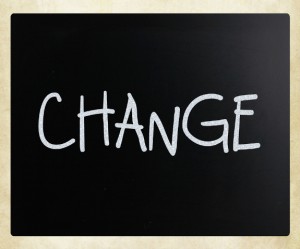 Change is hard. Continuous change is draining. Leading change is hardest of all. Leaders have to deal with a double-whammy. They have to make sense of change for themselves, while simultaneously helping others to navigate its choppy waters. And there are no magic bullets, despite what the book titles tell you. At best you can make the change less painful or shorter in duration, or ensure that the pain is less deep and disabling.
Change is hard. Continuous change is draining. Leading change is hardest of all. Leaders have to deal with a double-whammy. They have to make sense of change for themselves, while simultaneously helping others to navigate its choppy waters. And there are no magic bullets, despite what the book titles tell you. At best you can make the change less painful or shorter in duration, or ensure that the pain is less deep and disabling.
Yet so many organizations and, by implication, leaders, stubbornly adhere to the ‘magic bullet’ theory. I spent many years at one of the big 4 consulting firms. We used a phrase there about magic bullets that has stuck with me. We called it fad-surfing, and in retrospect we were pretty cynical about peddling it.
You know what I mean? Last year we went Lean, because Results Based Accountability hadn’t quite stuck the year before, and Kaizen of two years ago was too “Eastern” for our people. This year we have discovered Appreciative Inquiry and we are planning a big roll out, because we are convinced this is the tool that is finally right for our organization…
Now my purpose is not to disparage the tools – each of the ones mentioned have hugely positive potential as change vehicles. And for leadership teams that need to make a difference, quickly, I can see their seductive effect. But it won’t happen unless leaders realize that change happens in our hearts, and hearts drive behavior.
Tools and processes in themselves are necessary but insufficient conditions for effective change. People out there are change-weary, cynical and jaundiced. They have been sold the “next big thing” that will make the difference many times before. And they don’t believe it!
A leading UK leadership expert, Keith Grint, used a phrase that resonated with me. These magic bullets create a BOHICA effect: “Bend over, here it comes again!”
Many of the fads that leaders love to surf are genuinely based on good theory and practice. It’s not the tools that cause the problem, but the leader mind-set. Fad-surfers’ see the tool as the answer. But people are always the answer, never tools –and people change from their heart.
The heart to heart process is the foundation of good change the world over. Process too often wins out over humanity, and lazy application of cosmetic tinkering (looks good on the action plans) seems more seductive than the hard graft of building and nurturing positive, mutually challenging relationships.
So here’s my plea. Alongside the tools, in fact before the tools, let’s breed leaders who practice some of the fundamental, universal truths about people and change. Here are a few of mine to kick off the debate; you will surely have some of your own:
“People believe what you do, not what you say.” – Translation, we look our leaders in the eye and ask, “Do I believe in this person?” We don’t ask, “Do I like the look of this tool?” We want authentic connection that we can believe in, not the latest version of the truth.
“What you give is what you get.” – Translation, treat people as units of production and that is what they will become. Treat people as vessels of potential and over time they will reward your faith.
“People change from the heart outwards” – Translation, engage in heart to heart dialogue, do not rely on top down process roll-outs. Light small bonfires of change by example and join them together rather than trying to impose the exhortation to sign up to your latest fad. That’s what the cynics are expecting – and they are cynical with good reason.
“If you are selling hammers, you will only look for nails.” – Translation, teach people about aspirational change, not how to re-order their world to meet specific project objectives. When they believe you, they will repay your faith many times over by finding and sharing better ways to make their world a happier, healthier and more effective place.
Challenge others to take personal responsibility by doing so yourself.” ~ David Hain Tweet this
“Good practice is contagious – but so is bad practice!” – Translation, undertake regular review at ground level, look people in the eye and ask for feedback, listen deeply to what they say and adjust plans in response. Human beings respond deeply to authenticity, and we can spot the absence of it a mile off! Have the courage to role model change and the honesty to accept feedback when it’s not inspiring others.
“Challenge others to take personal responsibility by doing so yourself.” – Translation, we get inspired by others who can see in us what we are often blind to in ourselves. Not through false positives based on seductive models. Genuine encouragement to fulfill our potential is far sexier than the latest big thing. Leaders need to seek partners in aspiration, not converts to a tool or process.
If more leaders approached change with these principles in mind rather than a promoting programme based, fad surfing mind-set, people will make a real and sustainable difference in their place of work. Maybe one day we will finally see “the last of the BOHICANS”!

